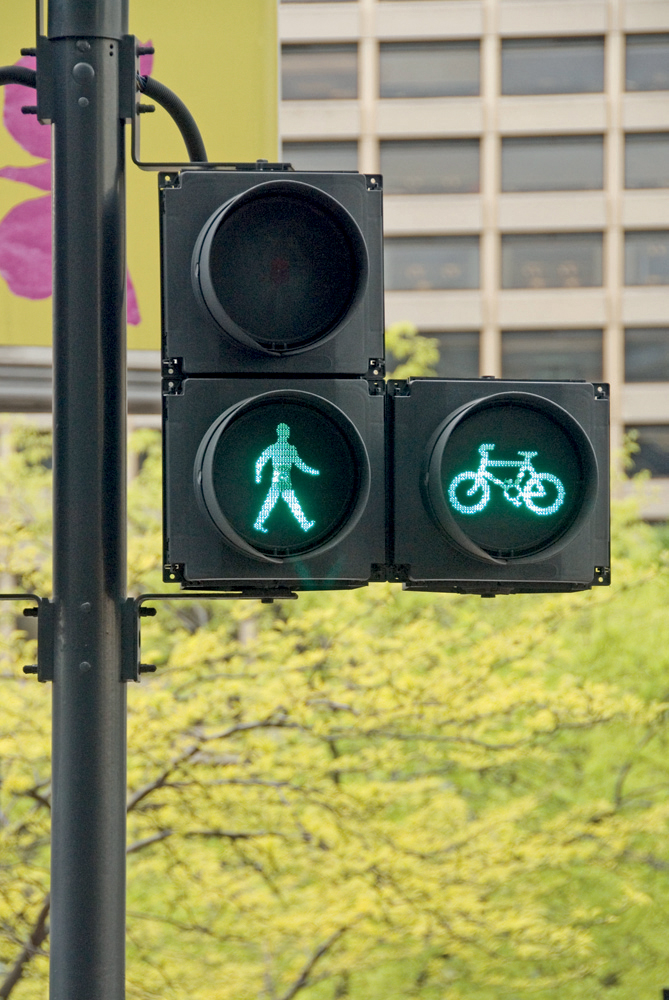
Richard Cuerden considers measures to improve the safety of vulnerable road users.
The competitive nature of the car market has seen an increase in protection for those travelling inside the vehicle and this is reflected in the casualty statistics -but the same does not apply to those outside the vehicle. And with current societal trends such as ageing populations, an increasing number of pedestrians and cyclists encouraged by environmental policies, this is an area that authorities such as the European Union are keen to address.
This quest may be helped by advances in Connected and Automated Vehicles (CAVs) and associated technologies which have the potential to revolutionise transport and journey choices. The rate of the development of this technology is expected to be rapid and is a crucial area for further research to understand more about how such vehicles can be operated safely and efficiently – which is why
The combination of such societal and technological changes, in part influenced by new types of vehicle and transport options, will change populations’ exposure to road collision risk. As a result, vehicle safety priorities are changing and future vehicle safety regulations need to adapt to remain relevant and effective.
What does this mean for vulnerable road users?
The last 10 years have seen significant reductions in the number of people killed on Europe’s roads. However, while the number of fatalities is decreasing, VRUs have become an increasingly important proportion of the total casualty figures.For instance in 2013, VRUs accounted for about 47% of deaths in the 28 European Union countries with pedestrians accounting for 22%, motorcyclists 17% and the remaining 8% were pedal cyclists.
Most of the pedestrians and cyclists fatalities were caused by collisions with cars (68% and 52% respectively) and unlike many other road fatalities, most pedestrians and cyclists were killed in urban areas, 69% and 56% respectively.
To proactively address future road safety challenges and to reduce today’s unacceptable figures (approximately 12,400 VRU deaths in 2013 within the European Union alone), we need to not only learn from the historical data, but consider future changes too. Future societal and technological trends mean that, in the short- to medium-term, it is likely that there will be a greater number of collisions between passenger cars and VRUs (pedestrians and cyclists) because of the increased exposure.
Safety regulation
Last year TRL undertook a review of what is known within the EU as the General Safety Regulation (GSR) which governs, amongst other things, the general safety type approval requirements for motor vehicles, their trailers and systems, components and separate technical units. A number of amendments have been made to the GSR including mandating electronic stability control (ESC) to all vehicles, lane departure warning (LDWS) and Advanced Emergency Braking Systems (AEBS) for trucks and buses and tyre pressure monitoring on cars.
In addition, Regulation (EC) 78/2009, which relates to motor vehicles type approval with regard to the protection of pedestrians and other vulnerable road users (the ‘Pedestrian Safety Regulation’) has been modified with more advanced provisions, adapted to the technical progress. This includes passive safety requirements to mitigate the risk of critical injury in case of a collision between a vehicle and a person.
On behalf of the European Commission, TRL provided advice on the likely benefit and feasibility of a range of possible measures to improve vehicle safety. The study involved stakeholders at several stages to ensure that relevant measures were being considered and that manufacturers, suppliers and other organisations had an opportunity to provide information on the feasibility and costs of state-of-the-art technologies.
The report provides indicative cost-benefit assessments for over 50 potential measures that could be considered for implementation in the General Safety Regulation. All vehicle types were considered and pedestrian and pedal cyclist safety measures for larger commercial goods and passenger vehicles were included.
The report also presents a review of the Pedestrian Safety Regulation, specifically considering the measures that have already been implemented, albeit for monitoring purposes only. The monitoring tests assess the pedestrian impact crashworthiness of cars and consist of an upper legform to bonnet leading edge tests and an adult headform to windscreen tests defined in Regulation (EC) 78/2009.
Mitigate injuries
TRL concluded that there is potential to improve vehicle crashworthiness performance to mitigate VRU injuries in the event of a collision; in particular by enhanced A-pillar and windscreen frame protection and improved bonnet leading edge design for upper leg, pelvis and thorax protection.
The monitoring tests are very important; because the road casualty evidence highlights that the test areas cause real world pedestrian injuries. If future casualties are to be prevented or mitigated, cars need to be designed to protect pedestrians and cyclists with special attention to the areas of the vehicle which most frequently cause the most serious injuries.
Obviously wherever possible collisions should be avoided, especially with pedestrians and pedal cyclists, so passenger car active safety systems were evaluated as part of the GSR review with regards to VRUs. Particular attention was paid to pedestrian and pedal cyclist detection (autonomous emergency braking or AEB), intelligent speed assistance (ISA), lane keep assistance (LKA) and reversing cameras.
Pedestrian and pedal cyclist capable AEB is a promising candidate for inclusion in the Europe Union’s vehicle safety regulations. The GSR review considered a wider scope of pedestrian and pedal cyclist detection systems. Defined as using sensors and/or cameras to detect the presence of pedestrians or cyclists in the path or periphery of the vehicle to provide a warning signal and/or can be linked to automatic braking functionality.
The current costs for pedestrian AEB systems vary between manufacturers but the prices are reducing as the technology matures and the volumes of product in the fleet increase.
Pedestrian AEB systems are likely to share hardware and software with other systems (such as car to car AEB) and therefore the additional cost of pedestrian AEB may not be as great as some current figures suggest.
Edwards et al. (2013) reported on benefits of three car pedestrian systems (with AEB functionality) from research carried out by the European Aspecss consortium.
The analysis found that second generation AEB systems (expected around 2018) could reduce fatal pedestrian casualties by 14%. An analysis by Hummel et al. (2011), predicted more optimistic casualty reductions of 21% for fatal pedestrians struck by cars.
Making improvements
As vehicle crash avoidance capabilities and driver assistance functions continue to evolve at a rapid pace, it’s important that all future changes to the GSR in Europe reflect both technological changes and future road casualty challenges.To prevent future pedestrian and pedal cyclist injury on the roads of Europe, TRL made a number of recommendations including the fitment of pedestrian and cyclist capable AEB to cars and further improvements to the crashworthiness of car exterior structures.
Good progress is being made reducing and preventing car user injuries and now it is time to ensure that similar improvements are realised for those outside the vehicles.
- ABOUT THE AUTHOR: Richard Cuerden, is chief scientist, engineering & technology at the transport research laboratory (TRL) in the UK.











